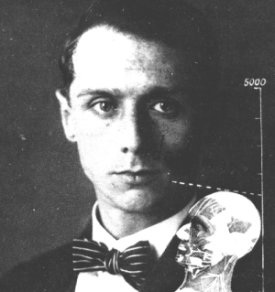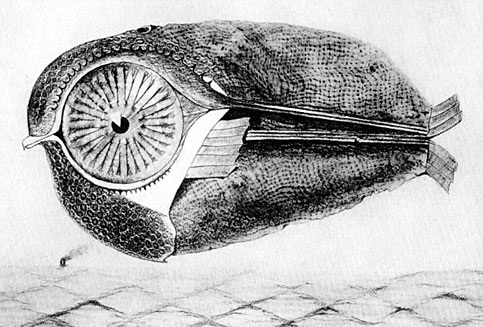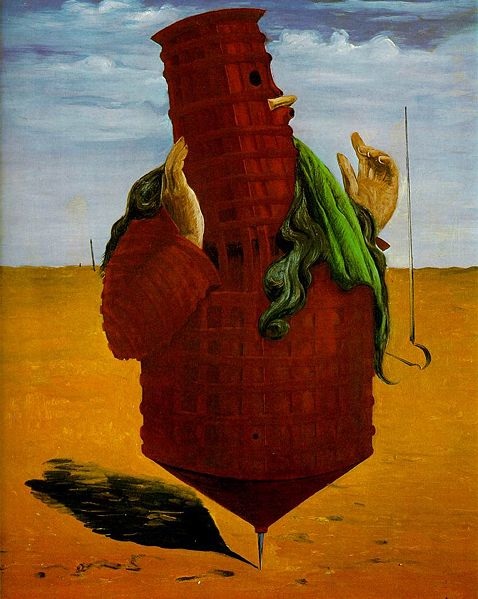Surrealism was more than just an artistic movement
It was philosophical, literary, and political...
| As an artistic style Surrealism would put on canvas the visual imagery of the subconscious mind –dreams. Surrealist would create art without the intention of any sort of logical comprehensibility. Their works are known for being odd; they take several random elements and make an “unexpected juxtaposition”.
 The Duo by Giorgio de Chirico (1914-15) |  The Great Mutation by Yves Tanguy (1942) “Surrealism advocated the idea that ordinary and kind of depictive expressions are vital and important. This came directly from the fascination among artists with the Freudian analysis of the subconscious.” Freud was the father of psychoanalysis (theory on free association and dream analysis). He said: “the unconscious was where our deepest desires were lurking”. Surrealism then followed this doctrine of his. They believed that the realm of the subconscious was where the true reality was and they tried to depict that on their canvasses. They would combine different elements within the same frame -things that would normally not be found together which was a final result produced illogical and disorienting effects.
|

Title: Oedipus Rex (1922)
Artist: Max Ernst (2 April 1891 – 1 April 1976).
Technique: Oil on canvas.
Location: Private Collection.
Dimensions: 93 x 102 cm.
| Oedipus Rex is one of Ernst’s most famous paintings. In it, two birds on the right; one has horns on which a string is attached while the other one is against a wooden fence. Both birds are in a box that allows them to only show their heads. On the left are fingers coming out of a brick wall holding a walnut, both pierced by what seems to be a bow-like device. In the background there is a hot balloon.
| The painting seems motionless. Just like a still life, all subjects are perfectly still and they seem to be placed the way the artist wants them to be. Even though the painting is quite asymmetrical (with several elements scattered all over), thee us a certain harmony to it caused by them counterbalancing each other.
| The colors used in the artwork are very realistic. However it is important to note that they are all cold-toned which only reinforces the frozen-like/still feel the painting gives. Although the elements in the painting don’t create dynamism, there is a certain violent aspect to the artwork. The impaled fingers and nut give a morbid mood to the painting. Furthermore, the absence of blood can create a feeling of discomfort.
| There are several “invisible” lines that guide the viewer’s eye through the painting like the edges of the walls for instance. The tridimensional aspect, but also the presence of both of foreground and background gives to the painting a lot of depth. The presence of dark colors in the creases of several elements of the painting such as the fingers, the walnut and the two birds create depth but also emphases their forms.
|

Title: The Elephant Celebes (1921)
Artist: Max Ernst (2 April 1891 – 1 April 1976).
Technique: Oil on canvas.
Location: Tate Gallery, London, UK.
Dimensions: 125.4 x 107.9 cm.
The central focus of the painting is a giant mechanical elephant. It is round and has a trunk-like hose protruding from it. The creature has a frilly metallic cuff or collar, and a horned head and tail. The low horizon emphasizes the creature's bulk, and the gesture of the headless mannequin introduces the viewer to the figure. The mostly empty sky contains more incongruities: there are two fish "flying" at left. The black shape to the right of the fish looks like an oncoming airplane, and there is a trail of smoke in the right part of the sky.
| The painting is overall filled with action; several things are happening at the same time: the elephant with his curved trunk is smoking like a chimney, which makes it, look like a working factory. The headless mannequin seems to be “waving”. The sky seems almost alive due to the dark brushstrokes and the fishes at its top left. The vertical line on the left breaks symmetry from the central body and brings dynamism.
| This dynamism is nonetheless subdued due to a grayish dull and black color. Some bright colors have been used as well to bring dynamism and transform to the abstraction of the painting. The dark colors and the geometrical shapes create a very strict, severe yet worrying mood. By taking into account the historical context, this painting may make allusion to the “mechanical terror” of the war experience.
| Mostly curved lines have been used, giving an overall dynamic feel. The central space is occupied by some geometrical curves; the bust on the right corner brings to relief, naturalistic ones. The elements of juxtaposition and shadows create a three dimensional representation, though some of the shadows defy angle relation to other shadows, such as the elephant’s right leg’s shadow compared to the shadows of hose pipe, vertical line at left and left leg of the elephant.
|







 RSS Feed
RSS Feed